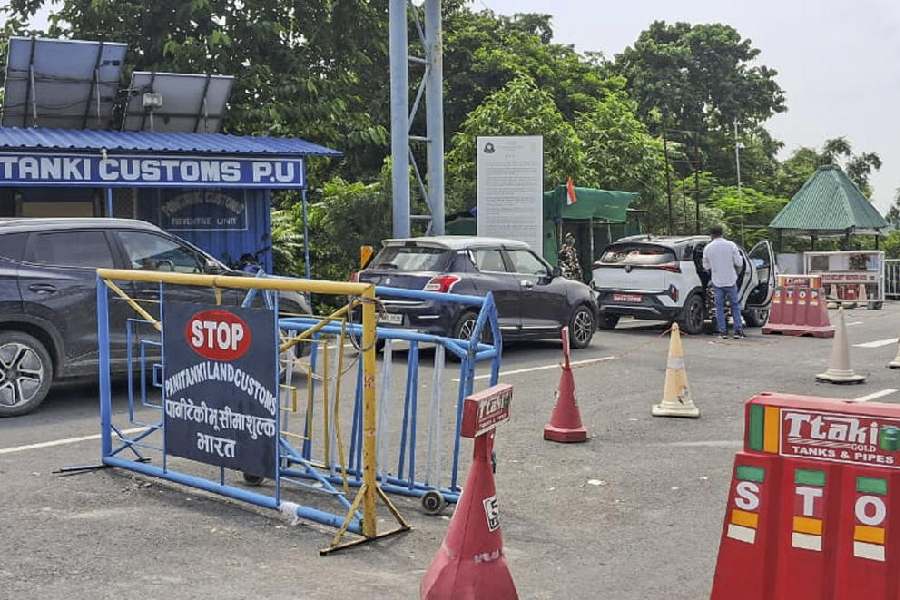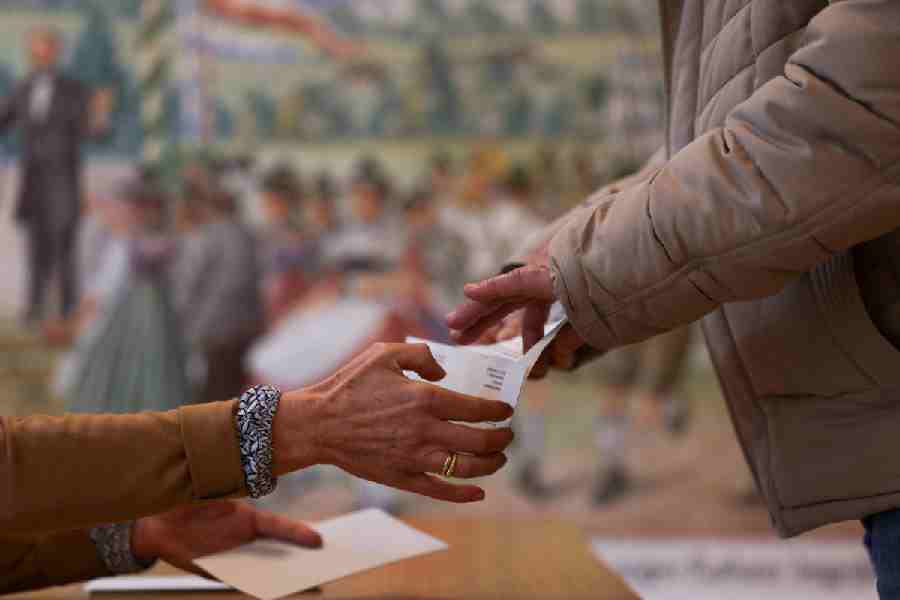 |
As our wait for a comprehensive social history of Calcutta seems far from over, one feels more strongly about its cultural components that continue to marvel the social historians. Belghoria-based Shankhamala’s latest production Jalasrot Katha Kay (The Stream Speaks) could be considered as a major step towards that direction. Directed by Sumantra Sengupta, this 110-minute-long presentation blended poems with songs, history with literature, elocution with oratory, music with drama; bringing low-brow and high-brow cultural ways of life as close as it could be. It was staged on the inaugural evening of the two-day festival (April 7-8) organised by Bachik Shilpi Sanstha at Rabindra Sadan.
The entire show was conceived on a grand scale. The narrative unfolded as it should have, with the verses from Bipradas Piplai’s Manasa Bijoy (1495), the oldest literary text bearing the name of the city-to-be. It also iterated the primacy of river Hooghly and gave the production its name. True to the medieval tradition, the verse was recited by a narrator on his knees with folded hands and closed eyes as a 26-member ensemble backed up from behind. Instantly one was drawn into the socio-cultural discourse that attempts an unconventional reading of the city’s development. The intention was made clear at the outset by recitations from Shankha Ghosh’s poem Babumashai and Kabir Suman’s song Nadir galpa and a cursory mention of Bankimchandra Chattopadhyay’s lament on absence of history in Bengal. The city life in 19th century was delineated through a series of eclectic fragments from literary works as well as tarja and songs from the Jelepara tradition. The staging of Valmiki Pratibha at the Jorasanko mansion was recollected from the writings of Abanindranath Tagore. An evocative background score and zonal lighting underlined the effort. The same pattern was maintained in the 20th century with the anti-Facist cultural movement and the trauma of the Partition years getting their due. The food movement of the 1960s was referred to and suddenly the slide projections on the painted backdrop began to suggest a political critique by referring to the Amlasole tragedy. By commenting on the unfulfilled promises of a socialist revolution at the end, Shankhamala stayed away from any idealist denouement. Although a collective effort, one should mention virtuoso Sumantra Sengupta’s solo performance in Jyotirindra Moitra’s poem Madhubanshir gali, recited in full without a dull moment. Among the many roles, Chandan Majumder essayed that of the protagonist in a dramatisation of Samaresh Basu’s Adaab stood out. Gaps in the narrative were imaginatively filled up by some insightful writing by Koushik Roy Chowdhury, the man who scripted the show. You can always rely on the ability of music director Suvendu Maiti. The Shankhamala members superseded expectations with their magnificent all-round display.
In comparison, the audio-drama version of Chirakumar Sabha, Tagore’s attempt at comedy of manners, on the second evening was a damp-squib. In spite of the presence of an impressive cast, the production directed by Jagannath Basu sparkled only in patches. Arindam Gangopadhyay’s presence as Akshay was the only redeeming feature.










